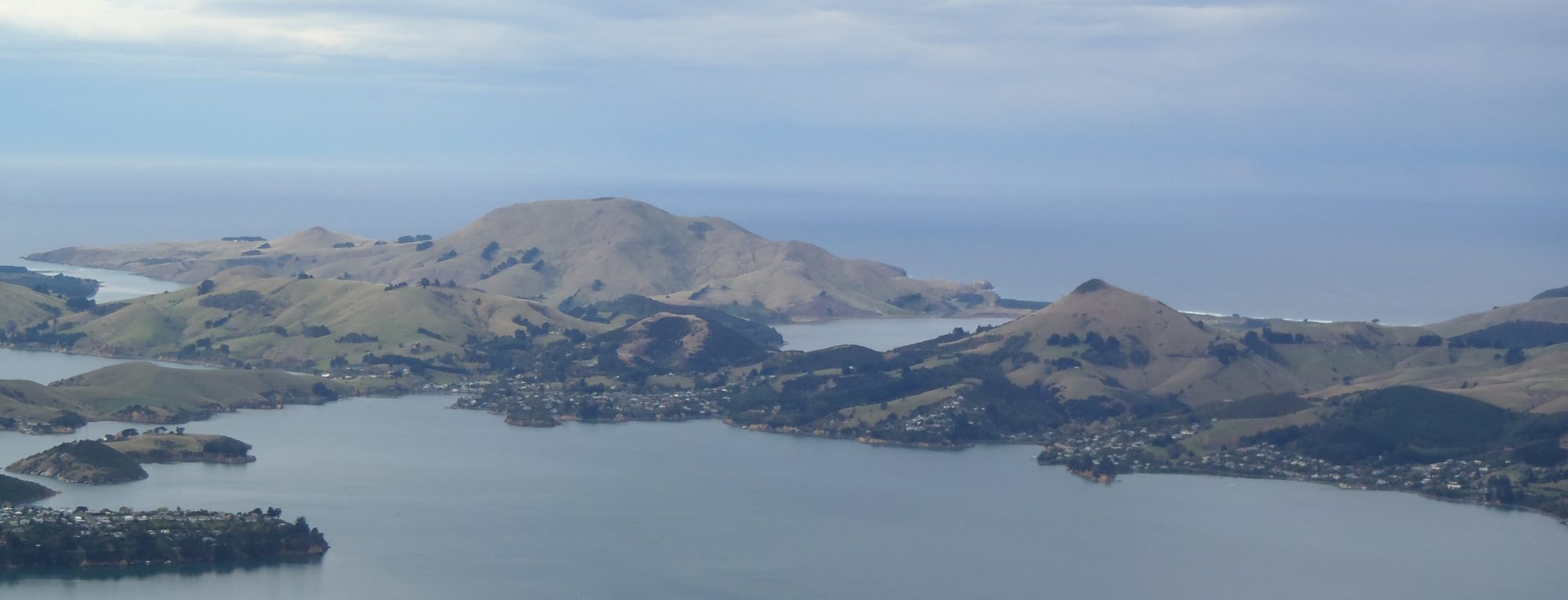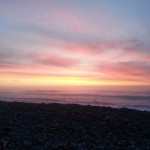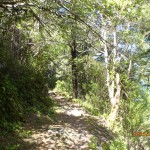Day two at Gillespies Beach, and we woke up with the sunrise. Yesterday we’d checked out the miner’s cemetery and the 1891 dredge, windows into the hard lives of the men and women who once called this remote West Coast beach their home. Today we planned to tackle the walk to Galway Beach, past a few more relics of the settlers and ending at the Galway Beach seal colony.
 A gaggle of mischievous keas joined us for breakfast. I thought I’d take a cute photo of them messing with our stuff, which was great until one of them stole Dad’s sock and led me on a merry chase.
A gaggle of mischievous keas joined us for breakfast. I thought I’d take a cute photo of them messing with our stuff, which was great until one of them stole Dad’s sock and led me on a merry chase.
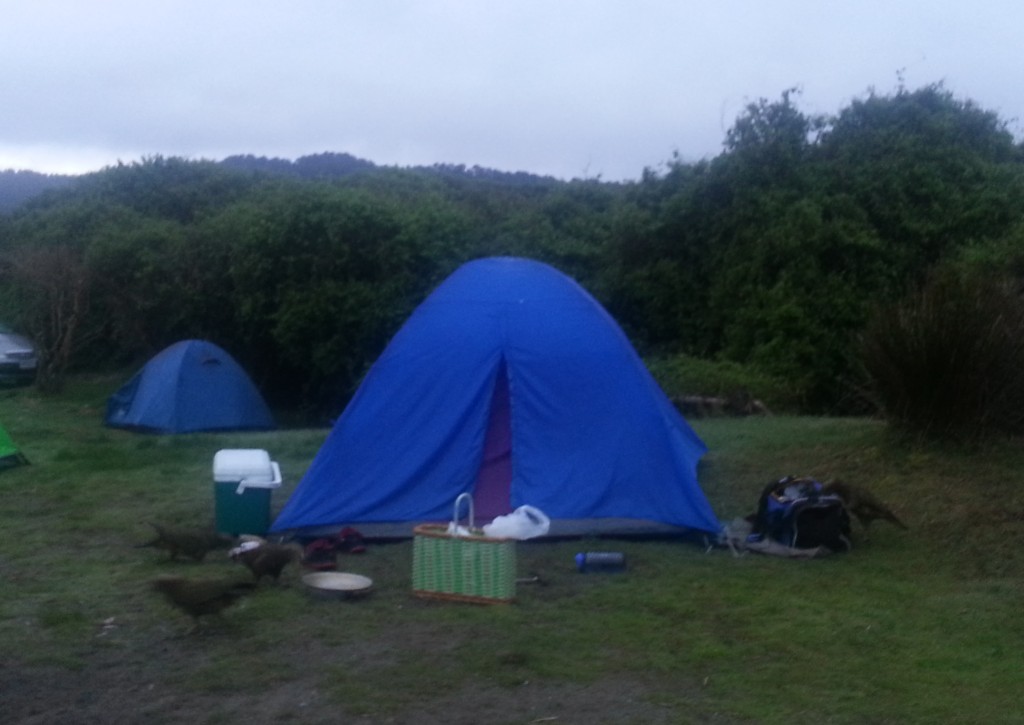
Once we’d retrieved the sock and safely secured all our equipment, we decided to make an early start. The day was threatening to get warm and we hoped to take advantage of the cool morning air as much as possible.
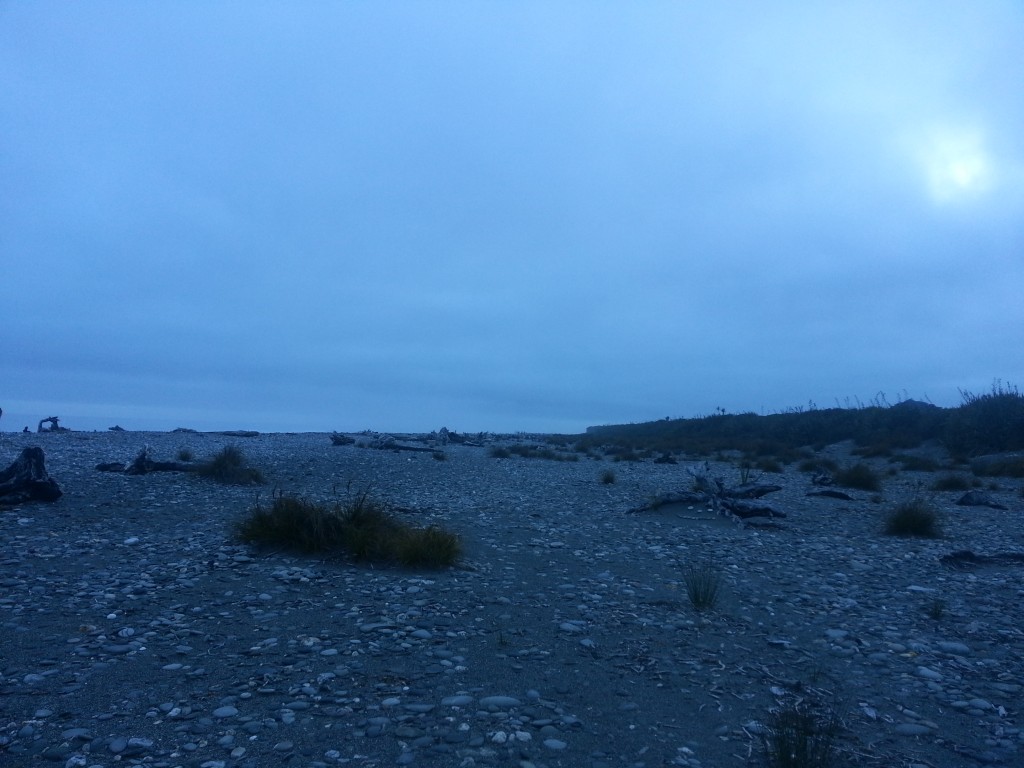
We decided to take the route along the stony beach, picking our way around twisted tree trunks and other washed-up debris. The going was a little tougher than we expected, due to the shifting ground and scattered obstacles. But soon we reached the mouth of the lagoon, glassy in the calm morning air, reflecting the bush-clad bluff of Gillespies Point beyond.
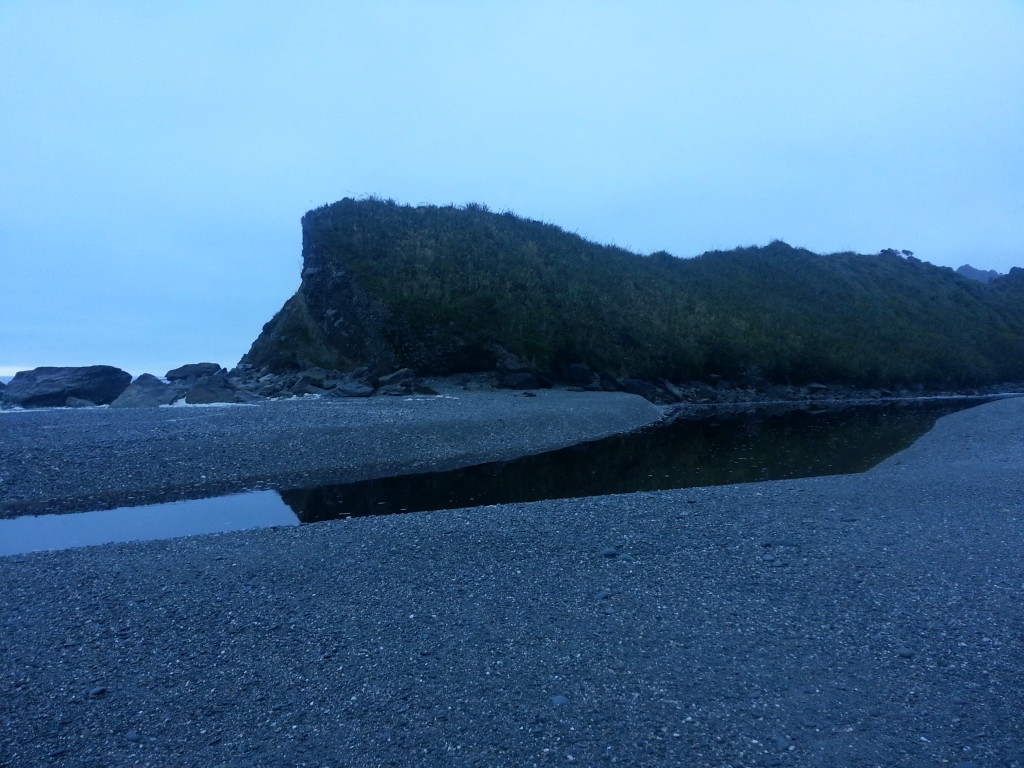
It’s not recommended to try to walk around the seaward side of this bluff with its dangerous tides, although that’s exactly the path that early travellers along this coast were forced to take. It was a constant hassle for store holders, whose pack horses were often knocked down by the surf and in danger of being swept away. The only other option for getting supplies to the beach was by boat, but bad weather could prevent them from getting through, sometimes leaving the town on the brink of starvation.
Lucky for us we have the option of walking up the estuary and taking a foot bridge over the lagoon.
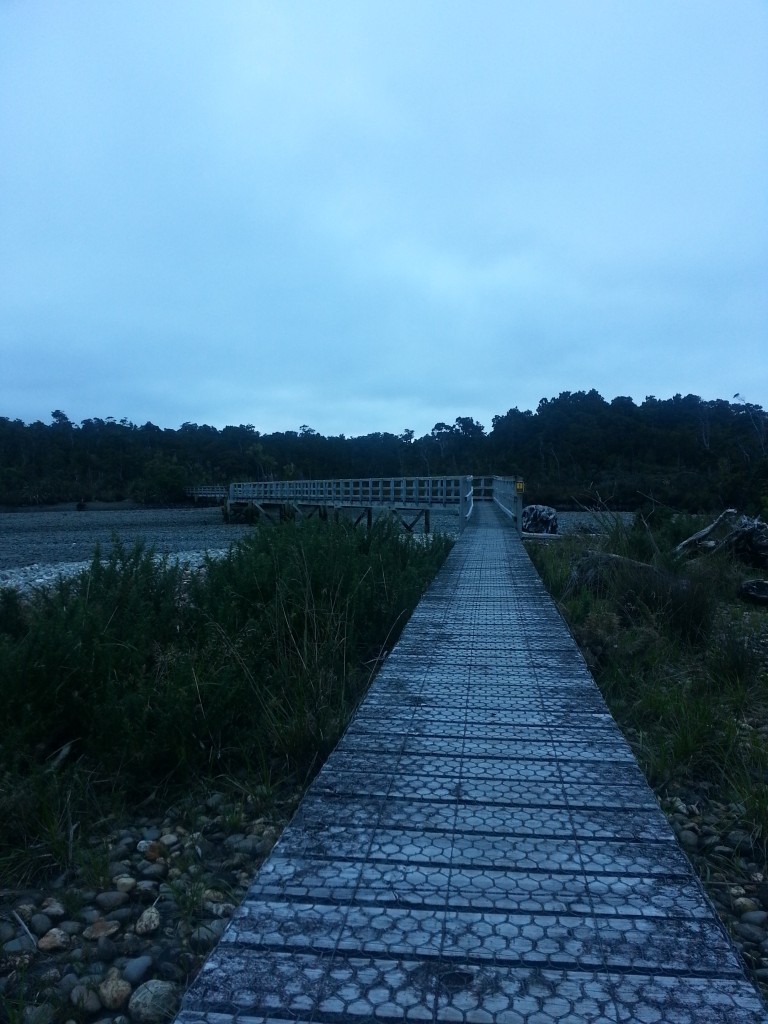
Under the warm humid rainforest canopy, surrounded by ferns and hanging vines, it was almost possible to believe that we’d stepped into the Amazon.
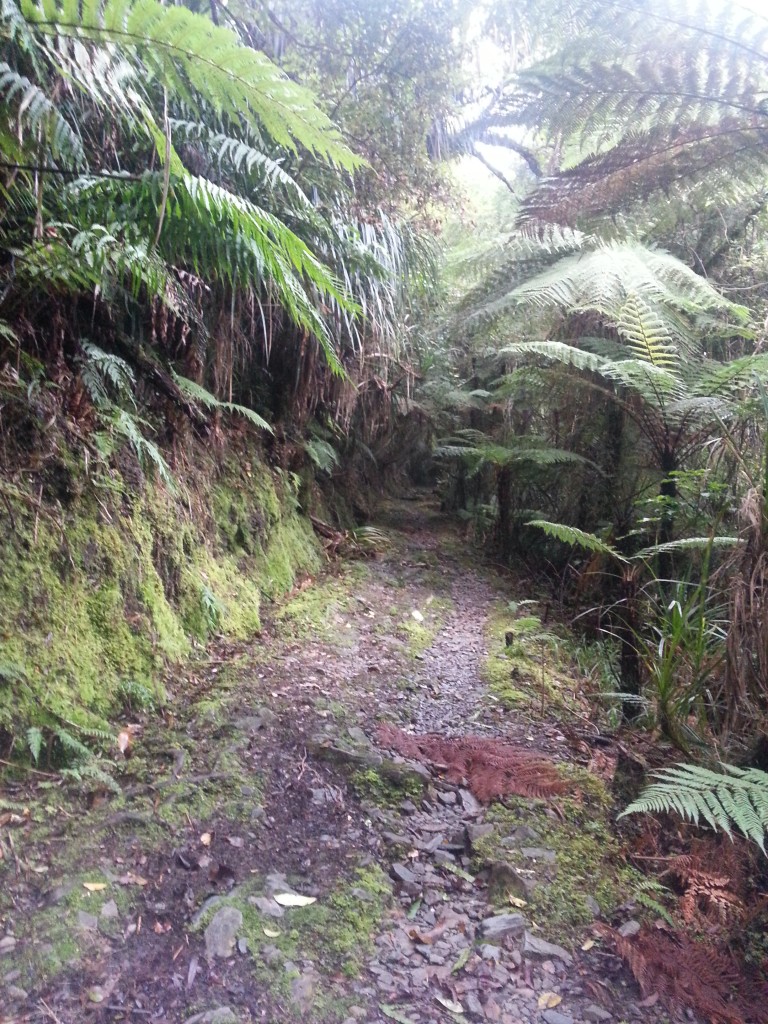
We followed the rough old road until we came to the turn off for the miners’ tunnel, painstakingly dug out by the early inhabitants of this coast so that they could avoid the aforementioned dangerous tides around the bluffs.
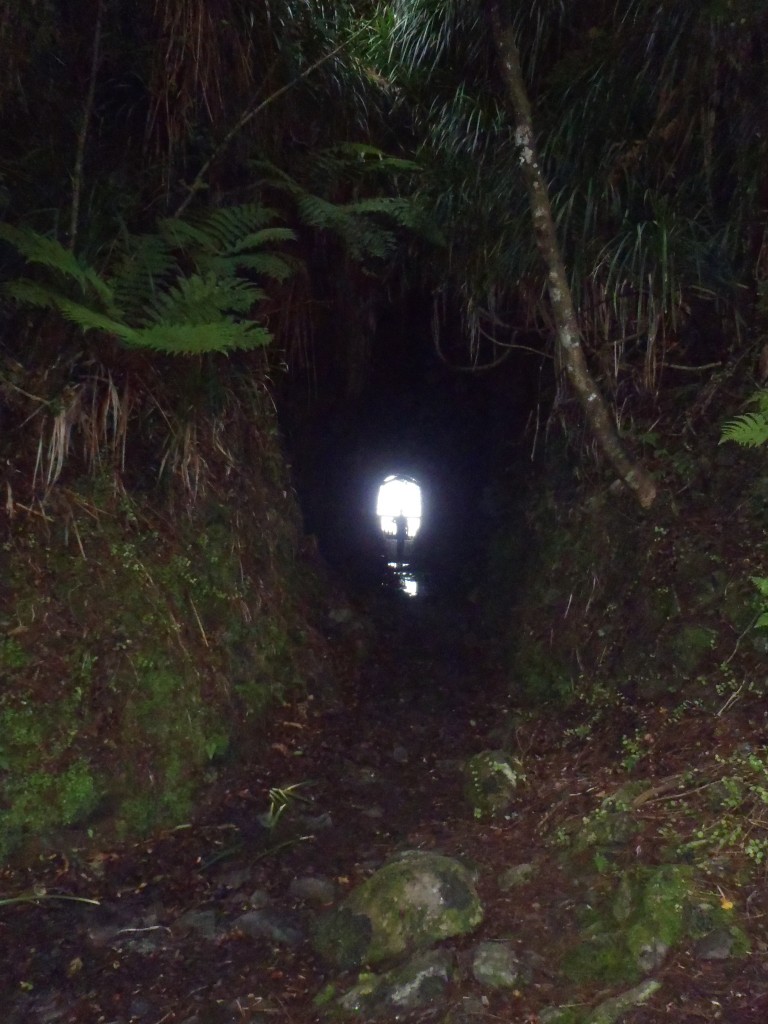
The struggles of the Anglican Bishop Julius of Christchurch as he tried to reach Gillespies Beach in 1890 give us some insight into the difficulties travellers used to face. Coming down the coast from the north on a wet stormy night, his horse was caught by a wave and fell on top of the poor bishop. Once the horse was righted, the bishop was almost pulled out to sea but another wave sent him spinning back into shore.
By the time they reached the approach to the tunnel, it was pitch dark and the party had no dry matches to light to get their bearings. It was impossible to make their way up or down the beach, and it took the bishop’s guide three hours to locate the tunnel while the unhappy man of God waited with the horses in the freezing rain.
Once safely installed in Ryan’s Hotel, they took stock of the damages. The bishop had lost his hat and his fancy watch was destroyed, but at least his vestments had survived.
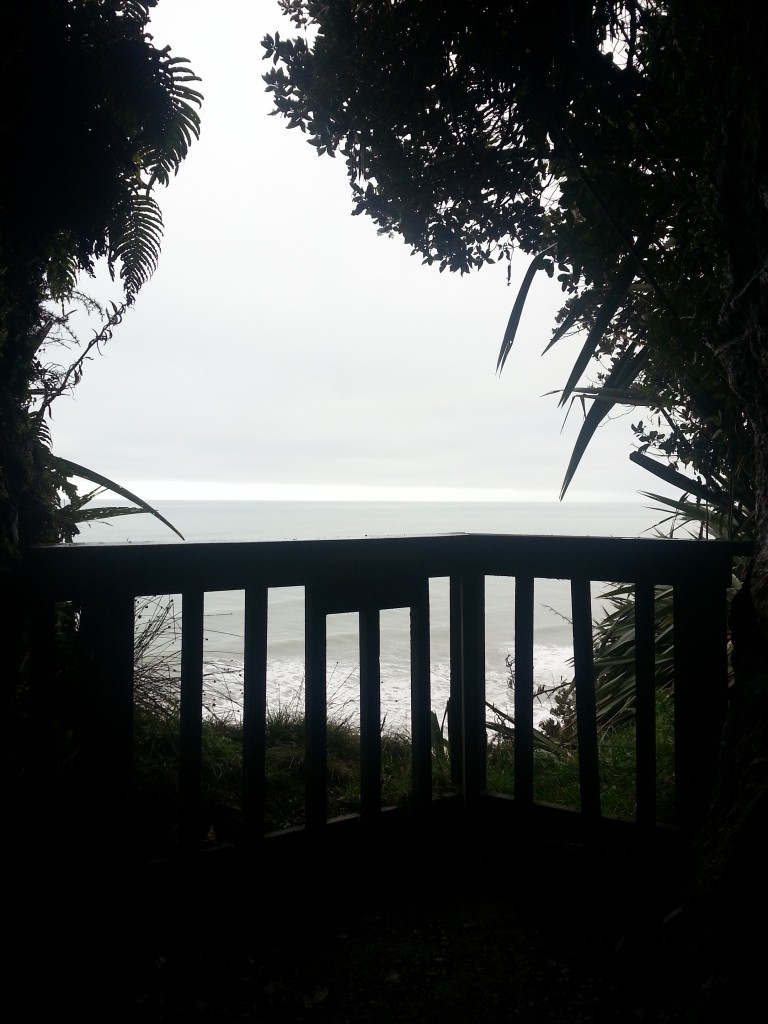
His tenacity served him well, as Bishop Julius would later become the first Primate and Archbishop of New Zealand.
We doubled back to the signpost and took the other fork of the trail that would lead to Galway Beach. We stumbled over rocks and tangled roots and squelched through muddy patches. Sometimes the path was almost a shallow stream.
On the way we spotted a very special bright blue mushroom. Entoloma hochstetteri features on our $50 note and back in 2013 there was some buzz about possibly using it to create a natural blue food colouring.
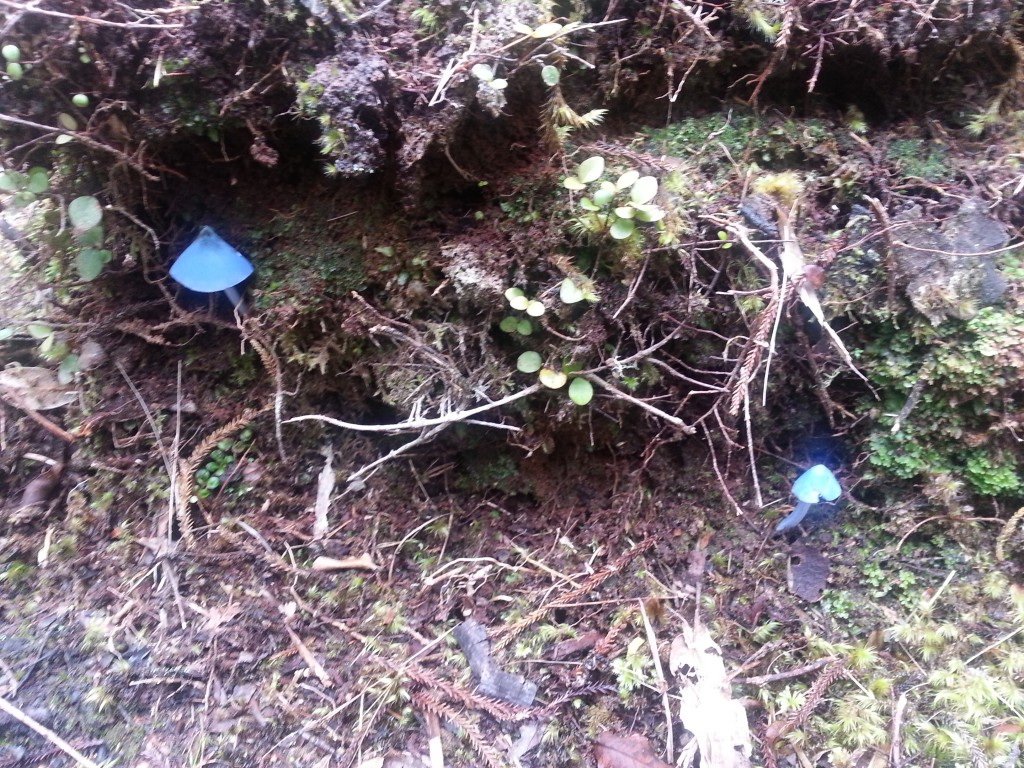
In fact we were treated to a kaleidoscope of fungi, also observing a bright red specimen that I believe is either Hygrocybe firma or Hygrocybe rubrocarnosa. Either way, it’s pretty!
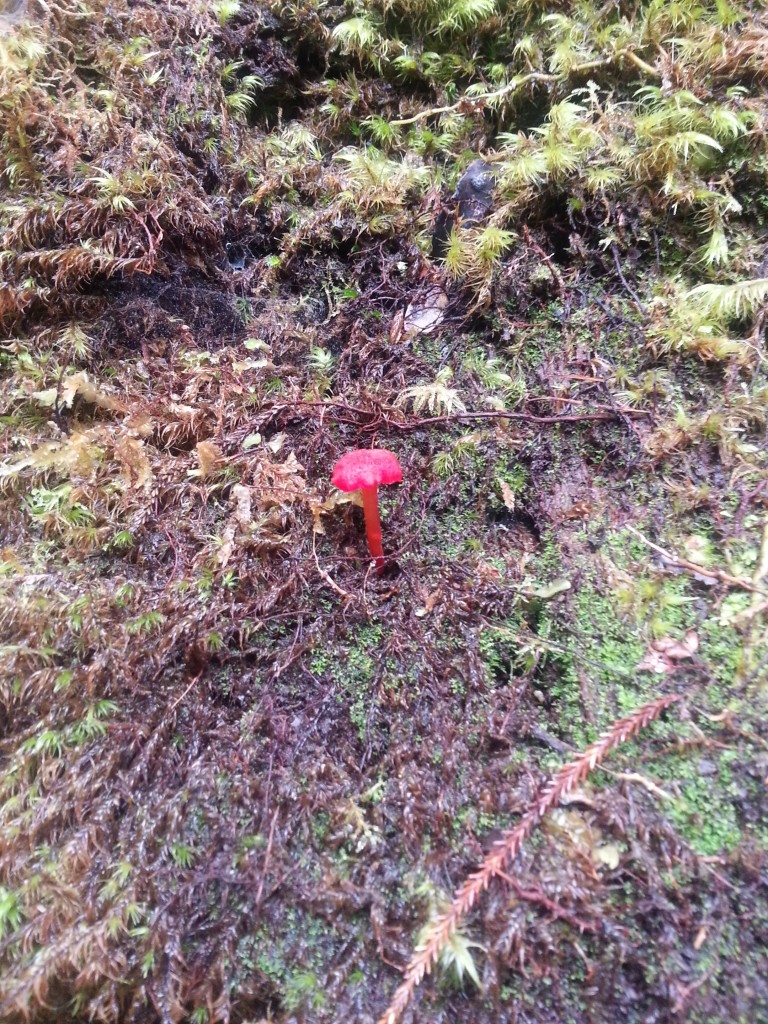
Heading onwards, we crossed Galway Creek via stepping stone and could finally hear the roar of the surf. Still, we travelled parallel to the beach for a while until we reached the ladder down the cliff face that would bring us to our destination.

This brought us into a dry creek bed and on to Galway Beach. With its scattered debris and stony shore, it was quite similar to Gillespies Beach, but to the south huge boulders lay between high cliffs and the pounding surf. According to the DOC signpost, that was the way to go to find the seal colony.
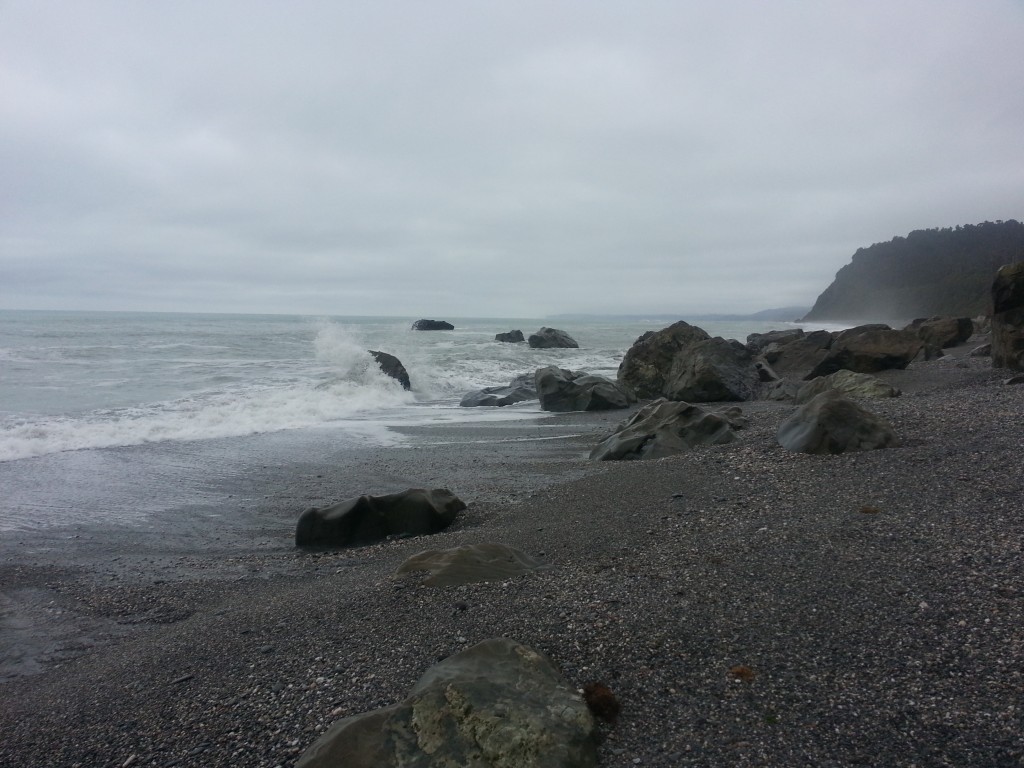
We picked our way around the boulders, but couldn’t find a single seal. There were several nice waterfalls though, and hey, another addition to our rainbow of fungus! This might be the orange poreconch, in which case it is an invasive species.
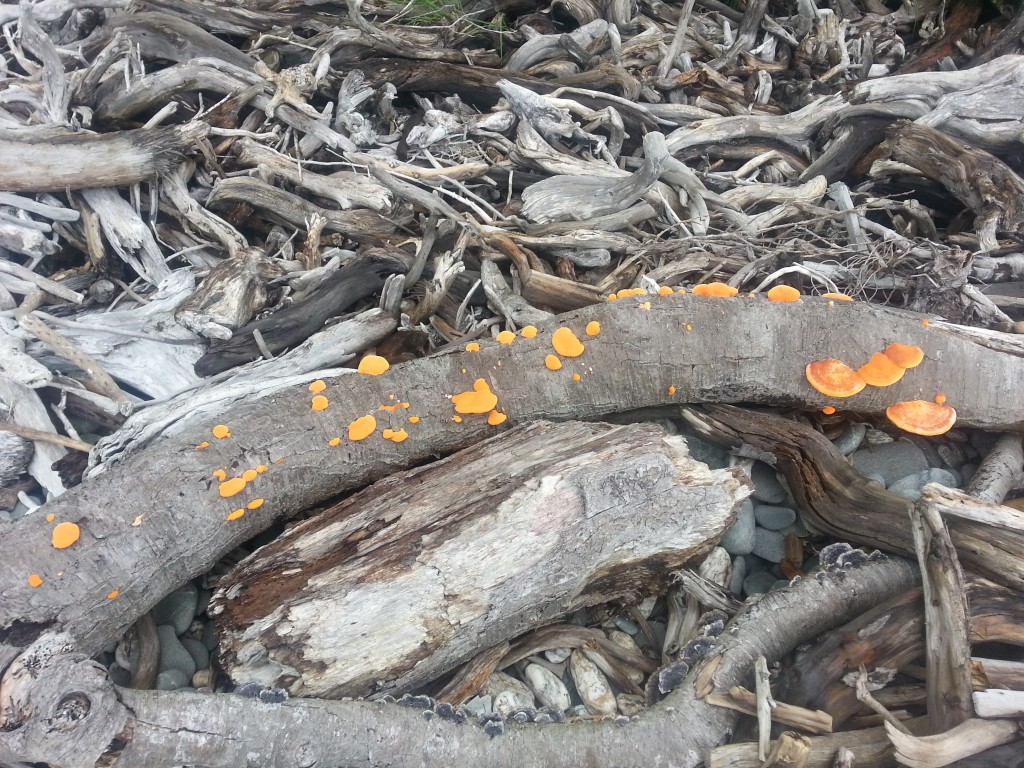
Giving up on the seal colony after being bitten by one too many sandflies, we retraced our steps back up the ladders and headed back through the forest. We greeted our mushroom buddies, leaped across Galway Creek and passed the tunnel turn off.
The tide had begun to rise by the time we crossed the lagoon and reached Gillespies Beach again. There was one last stop I wanted to make, so we hugged the edge of the dunes until I found the end of the bucket dredge track.
Abandoned here in a swampy depression is what remains of the bucket dredge used in a relatively successful dredging venture that ran from 1932 to 1945. Of course, pretty much anything could be considered more successful than the 1890 disaster.
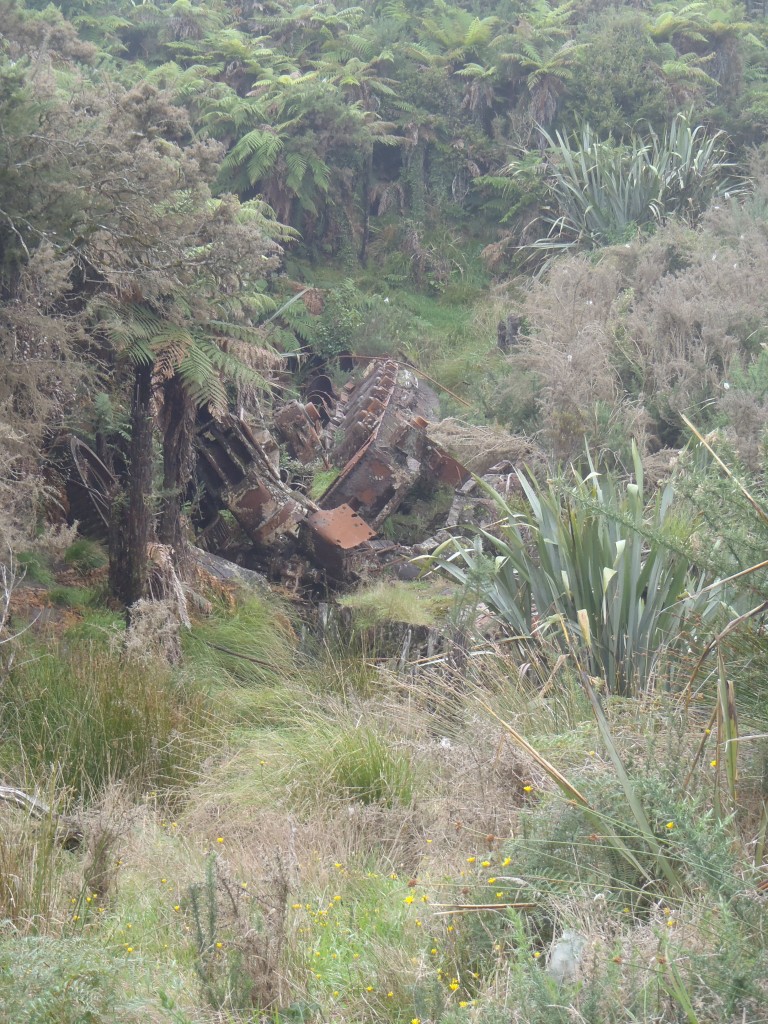
We wandered down the hill for a closer look. The sunken hulk was now a pale shadow of the powerful machine that had once chewed through the sand in search of gold.
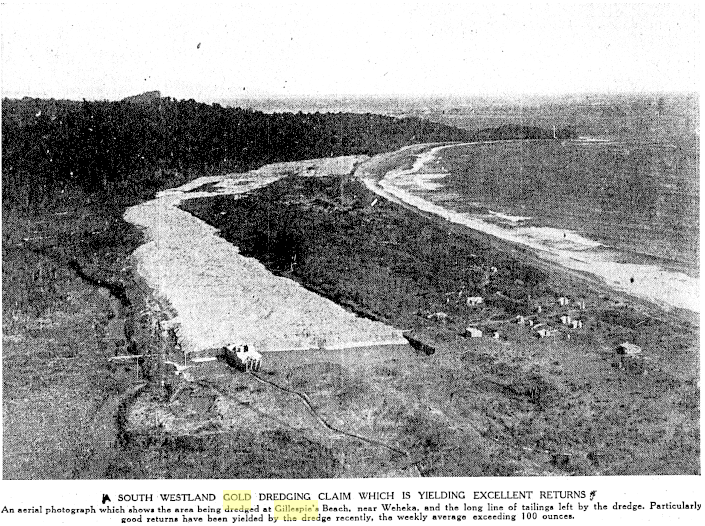
But, at least it’s still useful to someone…
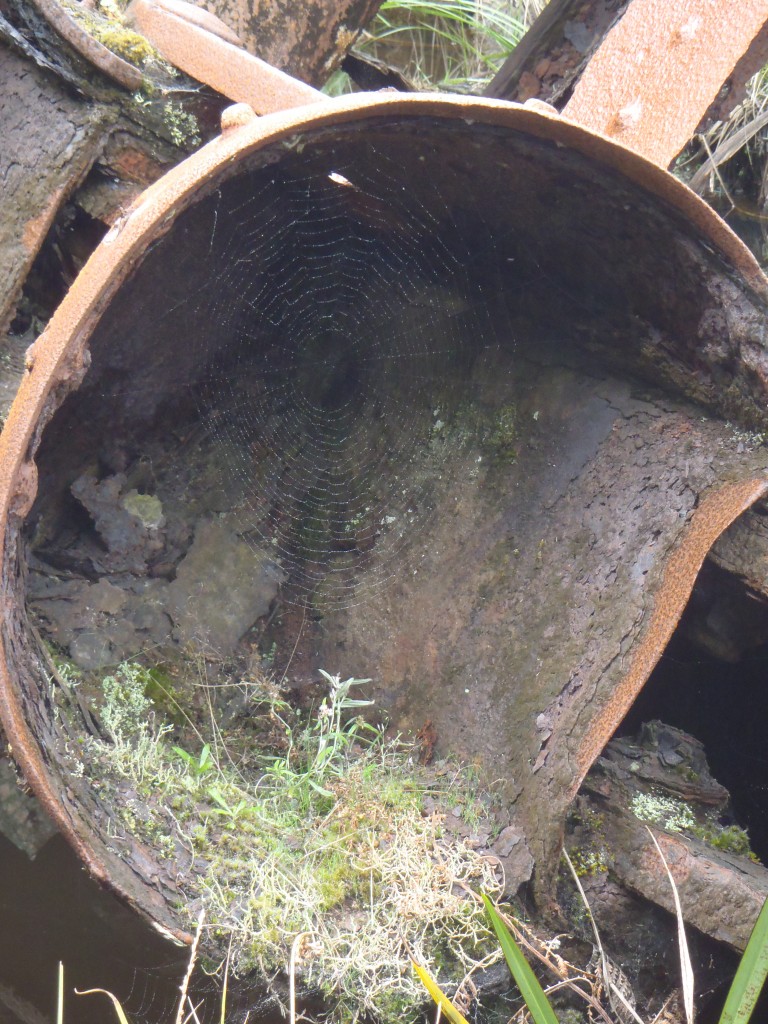
Having seen this final piece of the Gillespies Beach story, we returned to the camp site for wine and relaxation (and sandflies) after our four hour adventure. We spent one more night amongst the keas before embarking on the long journey back to civilisation.
References:
GILLESPIE’S BEACH. West Coast Times , Issue 1675, 11 February 1871, Page 3
Blue mushroom for food colouring? by Charlie Gates
